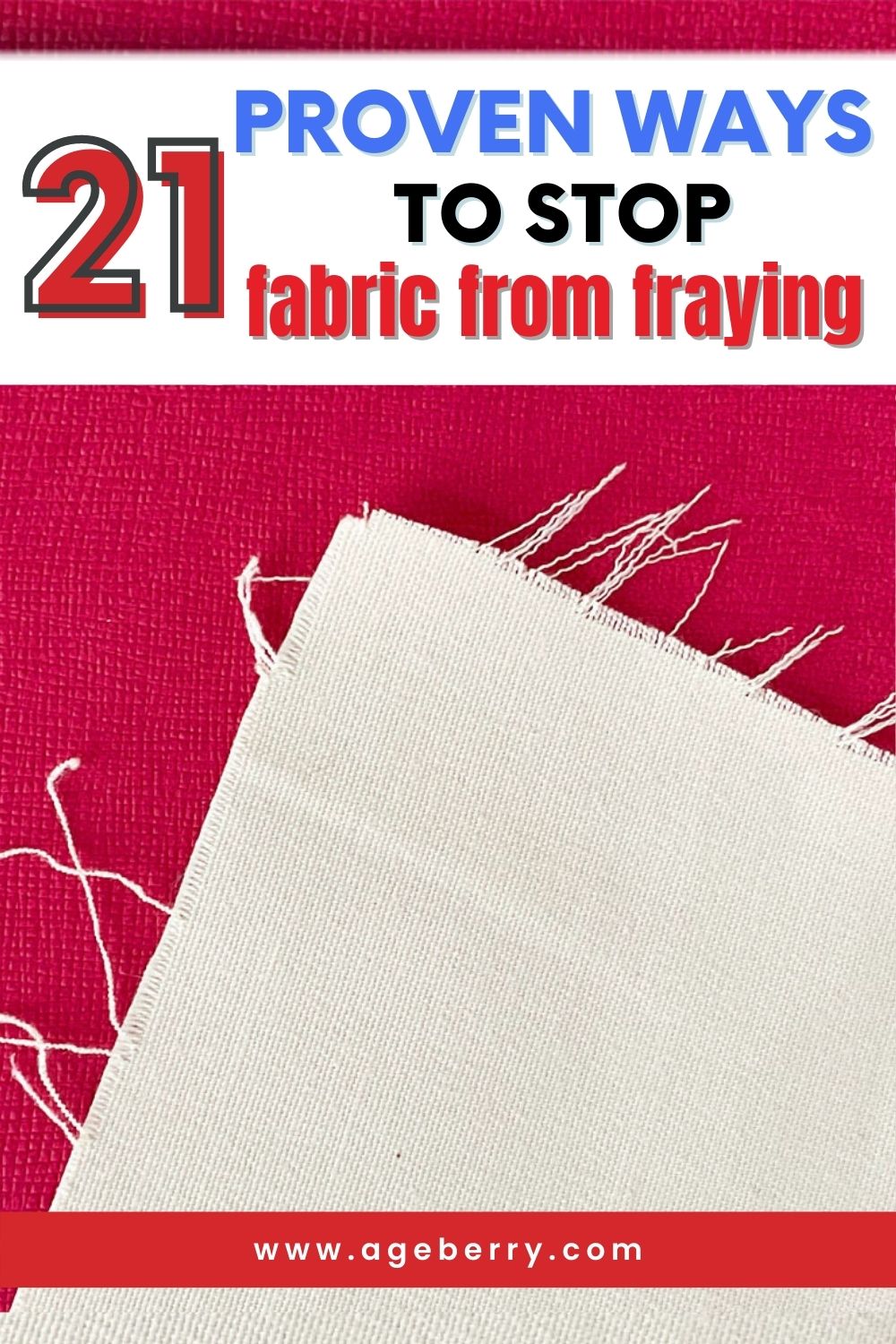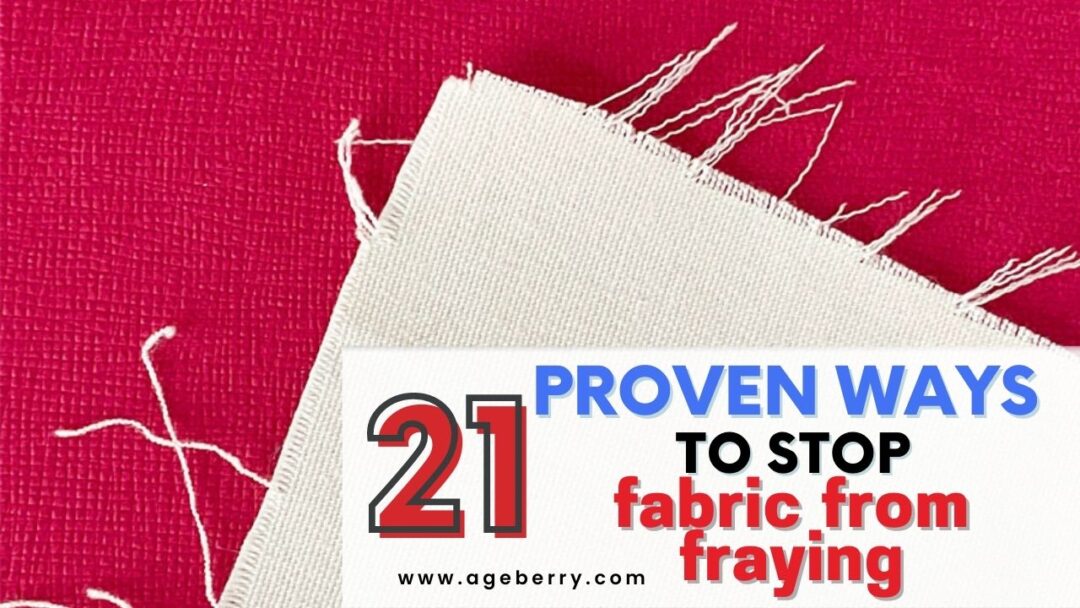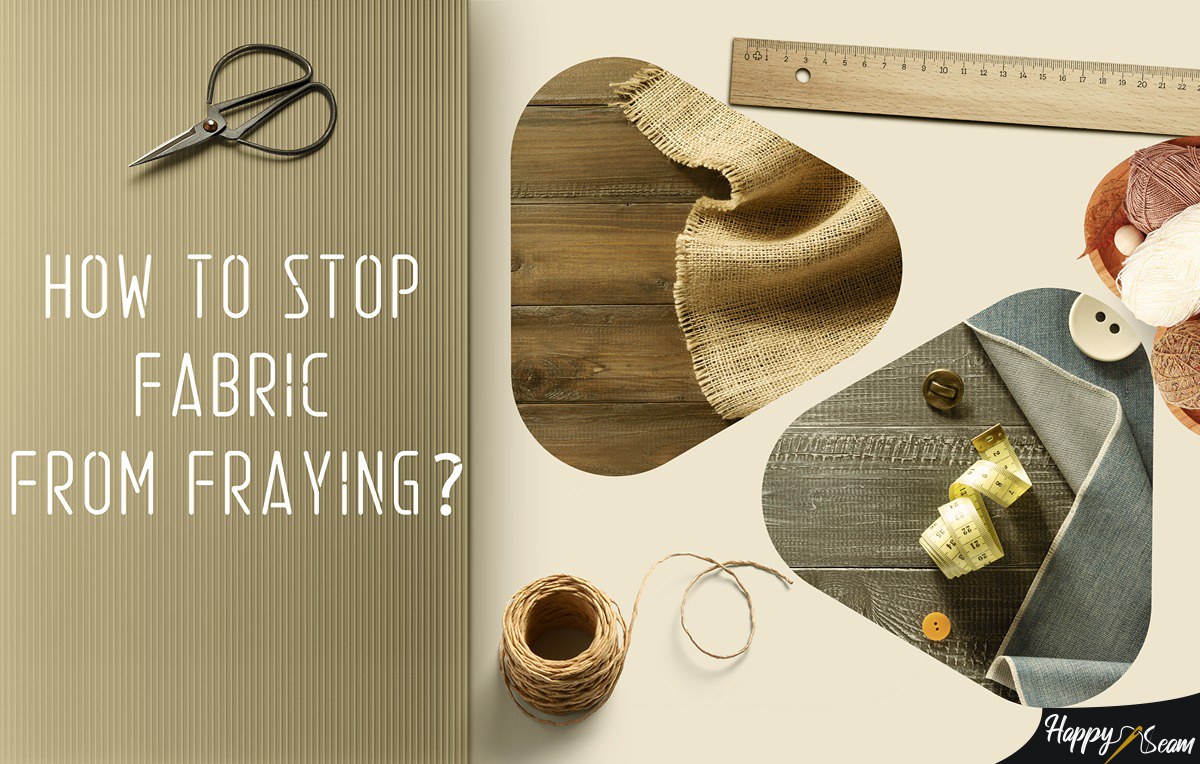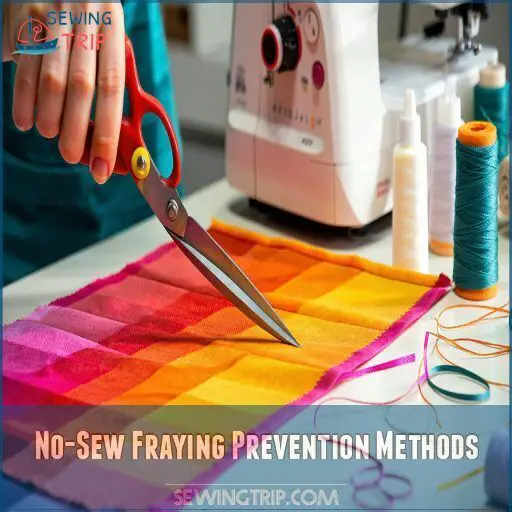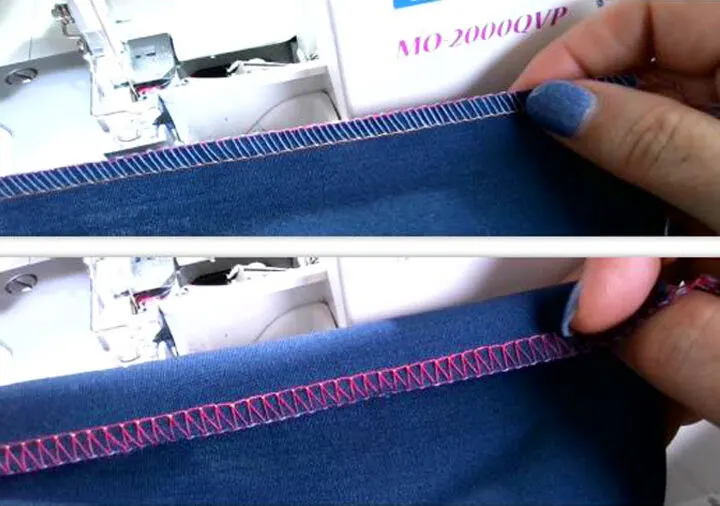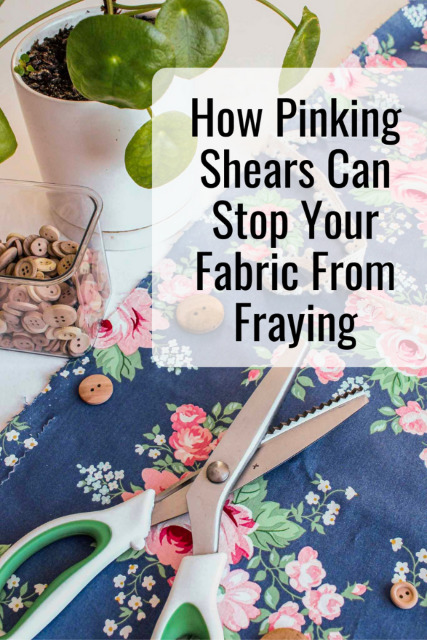How To Stop Fraying On Fabric

Fabric fraying is a universal sewing and crafting problem. But don't despair, several effective methods exist to combat this textile woe, ensuring your projects stay pristine.
This guide provides immediate, practical solutions to stop fabric from fraying, saving you time, money, and frustration. Learn proven techniques to keep your fabric edges neat and professional.
Understanding the Enemy: Fraying Explained
Fraying happens when the woven or knitted threads of fabric become loose and unravel at the edges.
This is especially common in fabrics with looser weaves or those made from natural fibers like cotton and linen.
Identifying the type of fabric you're working with is the first step in choosing the appropriate fray prevention method.
Immediate Action: Quick Fixes to Halt Fraying
For a temporary solution, reach for clear nail polish. A thin coat applied to the edge of the fabric will act as a sealant.
However, be cautious as some nail polishes can stain or discolor delicate fabrics. Always test on a scrap piece first.
Another quick fix is using masking tape or painter's tape along the edge to temporarily hold the fibers in place until you can apply a more permanent solution.
Long-Term Solutions: Preventing Fraying for Good
Sewing Techniques: The Stitch in Time
The most reliable way to prevent fraying is to secure the fabric edges with a sewing machine.
A zigzag stitch is a popular choice, providing a flexible and secure edge. Sew close to the edge of the fabric, encasing the raw fibers.
An overlock stitch, often achieved with a serger machine, creates a professional, finished edge by trimming and serging the fabric simultaneously. This is ideal for garments and items that will undergo frequent washing.
A blind hem stitch can also be used to finish the edge, folding the raw edge to the back and stitching it inconspicuously. This technique offers a clean and refined look.
Seam Finishes: Encasing the Edge
Bias tape offers a neat and durable finish. Fold the bias tape over the raw edge of the fabric and stitch it in place.
This method is particularly useful for curved edges or areas where flexibility is required.
A Hong Kong finish, a more advanced technique, involves encasing the raw edge with bias strips, creating a beautiful and durable finish often used in high-end garments.
Liquid Sealants: A Chemical Approach
Fabric sealants, such as Fray Check (a popular brand), are specially formulated liquids that bond fabric fibers together.
Apply a thin line of sealant along the fabric edge and allow it to dry completely. These sealants are generally washable but always check the product instructions.
Consider the fabric type and the intended use of the item when choosing a sealant, as some may stiffen the fabric.
Pinking Shears: The Serrated Solution
Pinking shears create a zig-zag cut along the fabric edge. This doesn't completely prevent fraying, but it reduces the length of individual threads that can unravel.
Pinking shears are best suited for fabrics that fray minimally or as a preliminary step before other fray-prevention methods.
They are a quick and easy option for projects where a perfectly clean edge is not essential.
Fusible Interfacing: Adding Stability
Applying fusible interfacing to the back of the fabric near the edge adds stability and prevents fraying. This works best on areas that won't be significantly stressed or stretched.
Cut the interfacing slightly wider than the seam allowance, fuse it to the fabric, and then sew as usual. This provides a reinforced edge.
Choose a lightweight interfacing to avoid adding too much bulk to the fabric.
Choosing the Right Method: Factors to Consider
The best method depends on the fabric type, the desired aesthetic, and the intended use of the project.
Consider the washability, durability, and flexibility required for the finished item.
Experiment with different techniques on fabric scraps to determine the most effective and visually appealing solution for your needs.
Ongoing Developments: New Products and Techniques
The textile industry is constantly evolving, with new products and techniques emerging to address common challenges like fraying.
Keep an eye out for innovative sealants, stabilizers, and sewing tools designed to simplify and improve fray prevention.
Online sewing communities and workshops are excellent resources for staying up-to-date on the latest trends and best practices.
In conclusion, preventing fabric fraying requires understanding your fabric and choosing the right technique. Whether it's a quick fix like nail polish or a more durable solution like serging, mastering these methods will elevate your sewing and crafting projects.
